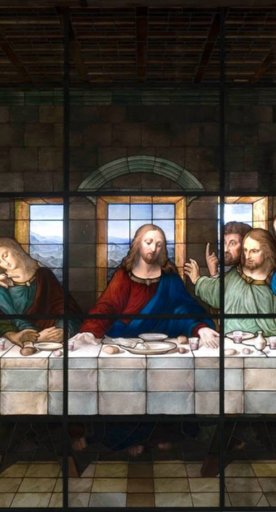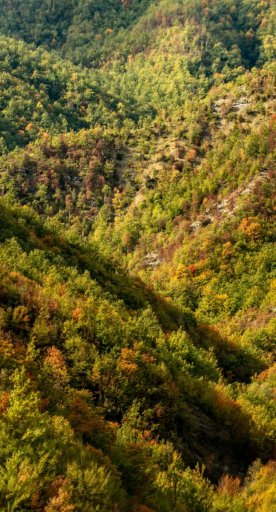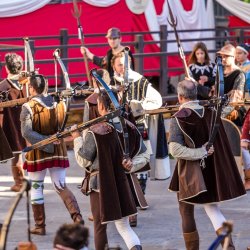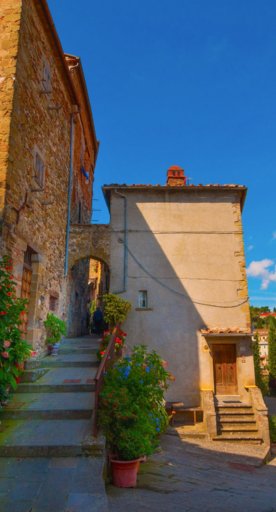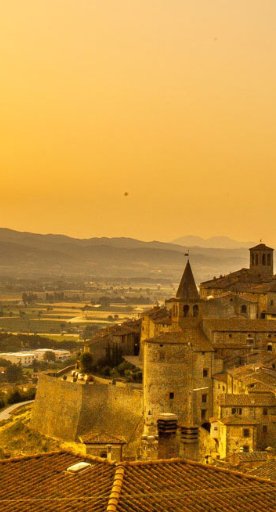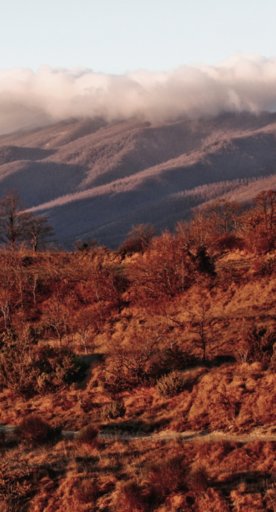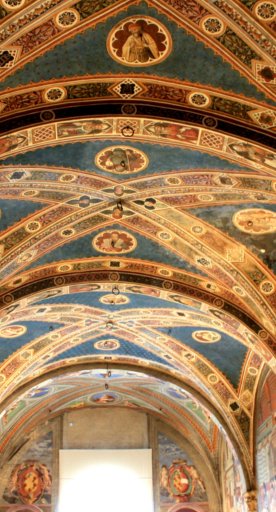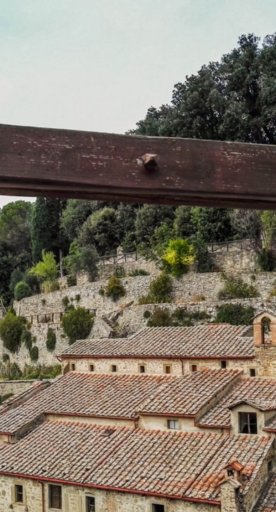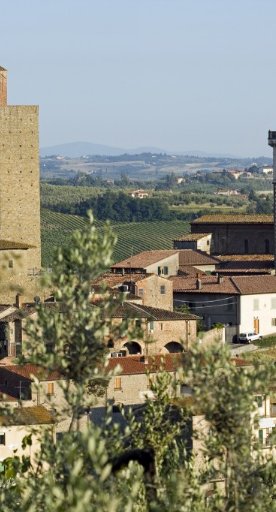
Sansepolcro
At the foot of the Apennine mountains, the historic village that is the birthplace of Piero della Francesca
Located at the foot of the last stretch of the Tuscan Apennines, Sansepolcro dominates the Vatiberina. It opens into a vast mountain and hilly amphitheater bordered by Alpe della Luna, Massa Trabaria, the hills of neighboring Umbria, the Aretino and the 'Alpe di Catenaia. The Sansepolcro area is surrounded by rolling green hills with expanses of tobacco.
Tradition attributes a religious origin to Sansepolcro. According to the story, two pilgrim saints, Arcano and Egidio were returning from the Holy Land and stopped in this valley to erect a chapel to house the Holy Relics.
Over the years, the cathedral dedicated to San Giovanni was built on this chapel and subsequently the whole village emerged, for this reason it's called "del Santo Sepolcro" (Of the Holy Sepulcher).
What to see in Sansepolcro
Enclosed by city walls defined by the gunboats of Bernardo Buontalenti and by the valuable Giuliano da Sangallo Fortress, the historic center is a real jewel that has preserved its traditional features up to the present day. It's inextricably linked to the great Piero della Francesca.
The artist, who used the name Pietro dal Borgo, immortalized Sansepolcro in many of his works, enhancing its typical features.
Don't miss a visit to the Civic Museum which houses the famous Polyptych of Mercy and the large fresco of the Resurrection, the work considered one of the most representative of the artist.
Other museums worth a visit include the Aboca Museum and the Historic Stained Glass Museum.
The Volto Santo, a wooden crucifix from the Carolingian era, is preserved in the Cathedral of Sansepolcro.
Other churches to visit include Santa Marta, Santa Maria delle Grazie, San Francesco, San Rocco and Sant'Antonio Abate, which together with the Medici Fortress and the birthplace of Piero della Francesca contribute to making Sansepolcro a destination of great value for lovers of art.
Enclosed by city walls defined by the gunboats of Bernardo Buontalenti and by the valuable Giuliano da Sangallo Fortress, the historic center is a real jewel that has preserved its traditional features up to the present day. It's inextricably linked to the great Piero della Francesca.
The artist, who used the name Pietro dal Borgo, immortalized Sansepolcro in many of his works, enhancing its typical features.
Don't miss a visit to the Civic Museum which houses the famous Polyptych of Mercy and the large fresco of the Resurrection, the work considered one of the most representative of the artist.
Other museums worth a visit include the Aboca Museum and the Historic Stained Glass Museum.
The Volto Santo, a wooden crucifix from the Carolingian era, is preserved in the Cathedral of Sansepolcro.
Other churches to visit include Santa Marta, Santa Maria delle Grazie, San Francesco, San Rocco and Sant'Antonio Abate, which together with the Medici Fortress and the birthplace of Piero della Francesca contribute to making Sansepolcro a destination of great value for lovers of art.
What's nearby
The Tuscan Valtiberina is a unique and extraordinary place to retrace the footsteps of San Francesco, with many hermitages, churches, monasteries and parish churches.
Just 6 km from the city, don't miss a visit to the Hermitage of Montecasale, a place of primary importance for Franciscan spirituality and tradition.
In the surroundings of Sansepolcro you can find the small medieval village of Anghiari, the setting for the famous Battle of Anghiari on June 29, 1440, which later became a fresco by Leonardo da Vinci.
In the territory of the valley we can also find the village of Monterchi where the fresco of the Madonna del Parto is preserved, one of the highest expressions of the Renaissance by Piero della Francesca.
Also worth a visit is the village of Caprese Michelangelo which bears the name of the famous Michelangelo Buonarroti, born here on March 6, 1475. Visit the house where he was born, now the Michelangelo Museum.
The Tuscan Valtiberina is a unique and extraordinary place to retrace the footsteps of San Francesco, with many hermitages, churches, monasteries and parish churches.
Just 6 km from the city, don't miss a visit to the Hermitage of Montecasale, a place of primary importance for Franciscan spirituality and tradition.
In the surroundings of Sansepolcro you can find the small medieval village of Anghiari, the setting for the famous Battle of Anghiari on June 29, 1440, which later became a fresco by Leonardo da Vinci.
In the territory of the valley we can also find the village of Monterchi where the fresco of the Madonna del Parto is preserved, one of the highest expressions of the Renaissance by Piero della Francesca.
Also worth a visit is the village of Caprese Michelangelo which bears the name of the famous Michelangelo Buonarroti, born here on March 6, 1475. Visit the house where he was born, now the Michelangelo Museum.
Events
Sansepolcro is the city of the Palio della Balestra. On the second Sunday of September, the crossbowmen of the village renew the challenge to their rivals in Gubbio. The city relives the fascinating cultural event that involves all the historical associations of the city. It features challenges, music and dance shows, and historical parades that bring to life one of the most intriguing historical re-enactments in the Valtiberina.
Making September an extraordinary month, there is not only the Palio, but also the Goldsmith Art Biennial and the Lace Biennial. These two important traditions promote local art and crafts. Also in this period, don't miss the Convivio Rinascimentale, a dinner based on Renaissance dishes in the charming setting of the Cloister of Santa Chiara.
Sansepolcro is the city of the Palio della Balestra. On the second Sunday of September, the crossbowmen of the village renew the challenge to their rivals in Gubbio. The city relives the fascinating cultural event that involves all the historical associations of the city. It features challenges, music and dance shows, and historical parades that bring to life one of the most intriguing historical re-enactments in the Valtiberina.
Making September an extraordinary month, there is not only the Palio, but also the Goldsmith Art Biennial and the Lace Biennial. These two important traditions promote local art and crafts. Also in this period, don't miss the Convivio Rinascimentale, a dinner based on Renaissance dishes in the charming setting of the Cloister of Santa Chiara.
Traditions and typical products
Sansepolcro, as well as the whole region of Valtiberina, boasts top-class artisan traditions such as glass, wood, stone, restoration, wrought iron and the production of the famous Tuscan cigar.
Discover the original and refined technique of bobbin or bobbin lace, handed down for generations.
Throughout the area you can taste the best of Tuscan cuisine based on mushrooms, truffles, chestnuts and good wine, and you can follow an itinerary in search of the most authentic flavors.
Sansepolcro, as well as the whole region of Valtiberina, boasts top-class artisan traditions such as glass, wood, stone, restoration, wrought iron and the production of the famous Tuscan cigar.
Discover the original and refined technique of bobbin or bobbin lace, handed down for generations.
Throughout the area you can taste the best of Tuscan cuisine based on mushrooms, truffles, chestnuts and good wine, and you can follow an itinerary in search of the most authentic flavors.
What’s nearby?
Tuscan Valtiberina


